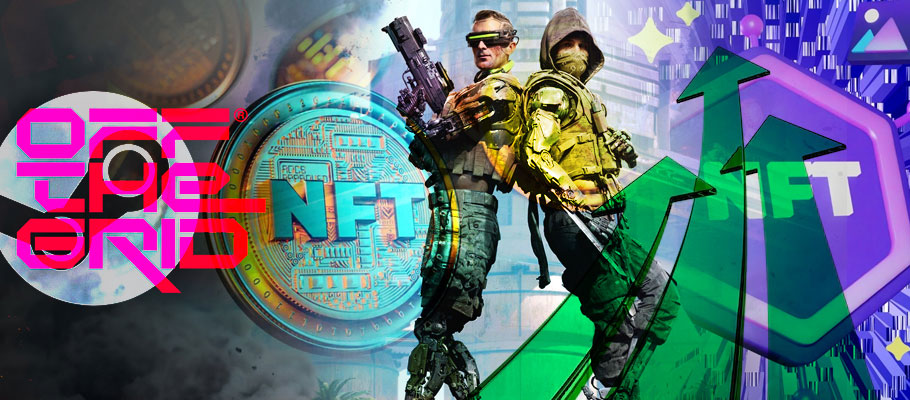
Published: May 28th, 2025
Avalanche-based battle royale shooter Off the Grid has started moving players onto the mainnet of its proprietary GUNZ blockchain, where they can trade GUN tokens for in-game NFT items.
Despite only a fraction of the user base being able to make trades, transaction volume is heating up, with some items selling for thousands of dollars' worth of crypto.
The sudden uptick comes as the popular Web3 multiplayer prepares to expand onto the Steam PC platform, which banned blockchain games back in 2021.
Fans have noted that Steam's listing for Off the Grid says it will feature an in-game marketplace, potentially a reference to crypto functionality.
At the time of writing, there were 16.4 million active crypto wallets on GUNZ, a new Avalanche L1 network designed to host Off the Grid and other games from developer Gunzilla Games. Meanwhile, just 21,000 players have been moved onto the fully-functional mainnet, roughly 0.13 percent of the player base.
Even with that fractional liquidity, some sizable trades have taken place. A tactical vest sold for USD 2,390 last week while a gas mask traded hands for around USD 1,100. ‘Convict’ chest rigs have been selling for more than $500.
In May 2024, crypto markets saw USD three billion in token unlocks across seven new crypto projects. Data from analytics firm TokenUnlocks showed the two biggest came from the Pyth DeFi oracle network and the Aevo crypto derivatives platform.
New crypto projects typically release their full supply of tokens incrementally over weeks, months or years. Bitcoin, for example, has released 19.7 million into circulation from a total supply of 21 million. The ‘tokenomics timeline’ is usually documented in a white paper accompanying the project's launch.
May 2024 also saw the much-watched DeFi oracle network Pyth activate its first unlock, just six months after its original go-to-market date. On 20th May 2024, 2.13 billion in PYTH tokens arrived in the market, making the value of the unlock around USD 1.24 billion.
Fifty per cent of the tokens fund ecosystem growth, 25 percent went towards publisher rewards, while the remaining quarter were auctioned off through private sales to support protocol development.
TokenUnlocks called the Pyth plan a cliff unlock, meaning a mass of tokens were released all at once rather than incrementally across days. Pyth plans another 2.13 billion unlock in June 2025.
Aevo took a different route for its unlock, combining both a cliff unlock and a linear unlock, where a specific number of tokens are released daily.
Some 827.6 million AEVO tokens worth ca. USD 1.24 billion were unlocked on 15th May 2024. Another 6.13 million worth USD 9.20 million were then released each day for the following nine days.
On 22nd May 2024, Avalanche released 9.54 million AVAX tokens worth ca. USD 329.18 million. Memecoin unlocked 5.31 billion MEME tokens worth ca, USD 147.94 million on 3rd May, while another 49.47 MEME tokens worth ca USD 1.38 million flowed into the market each day for the following 184 days.
A number of liquid staking tokens enjoyed significant gains in the early days of 2023 as a deadline for un-staking Ethereum approached. Data from Cryptotracker shows Rocket Pool (RPL) and Lido Finance (LDO) both saw notable gains.
LDO was the governance token behind Lido Finance, Ethereum's biggest liquid-staking protocol. It gained more than 17 per cent in 48 hours. Intense buying and selling of LDO pushed its daily volumes up across numerous exchanges to hit USD 275 million, a 434 per cent leap.
With a market cap just north of USD 1.5 billion, data from CoinGecko had LDO at 33th-place on its list of the largest cryptocurrencies.
Data from Coinglass showed that more than USD 1.6 million in LDO futures were liquidated between Sunday 8th January and Monday 9th January 2023. The majority (ca. 65 per cent) came from blow-off short trades.
The first week of January 2023 was a rewarding one for Lido Finance. LDO became the number one decentralized application when ranked by total value locked (TVL), knocking DAI creator MakerDAO out of the top spot.
After posting a tremendous 74.6 per cent gain over the previous seven days, LDO became crypto's largest weekly gainer. Bitcoin, by comparison, posted just 3.7 per cent in gains over the same period.
Rocket Pool's liquid staking token RPL also saw its price spike 14.1 per cent in the period.
Ethereum transitioned to a proof-of-stake (PoS) consensus mechanism in September of 2022.
The move to PoS eliminated the need for energy-intensive crypto mining almost overnight, replacing mining with a leaner and more network-responsive staking mechanism. In order to become a validator on the new Ethereum, users must first put up 32 ETH to demonstrate their ‘stake’ in the system.
Back in October 2022, when central bankers around the world were grappling with record inflation and its impact on their fiat currencies, Ethereum was dealing with an inverse dilemma.
Between the first and seventh of October 2022, the supply of Ether (ETH) fell by more than 4,000 tokens. Data from blockchain analytics firm ultrasound.money showed that the price boost one would expect from a sudden drop in supply hadn't happened, and in fact the opposite was occurring. The price of ETH had fallen by close to 3.7 per cent to around USD 1,300.
Since the Ethereum blockchain's paradigm shift from proof-of-work (PoW) to proof-of-stake (PoS) in September, this was the first ever period of deflation, where more ETH was burned than generated.